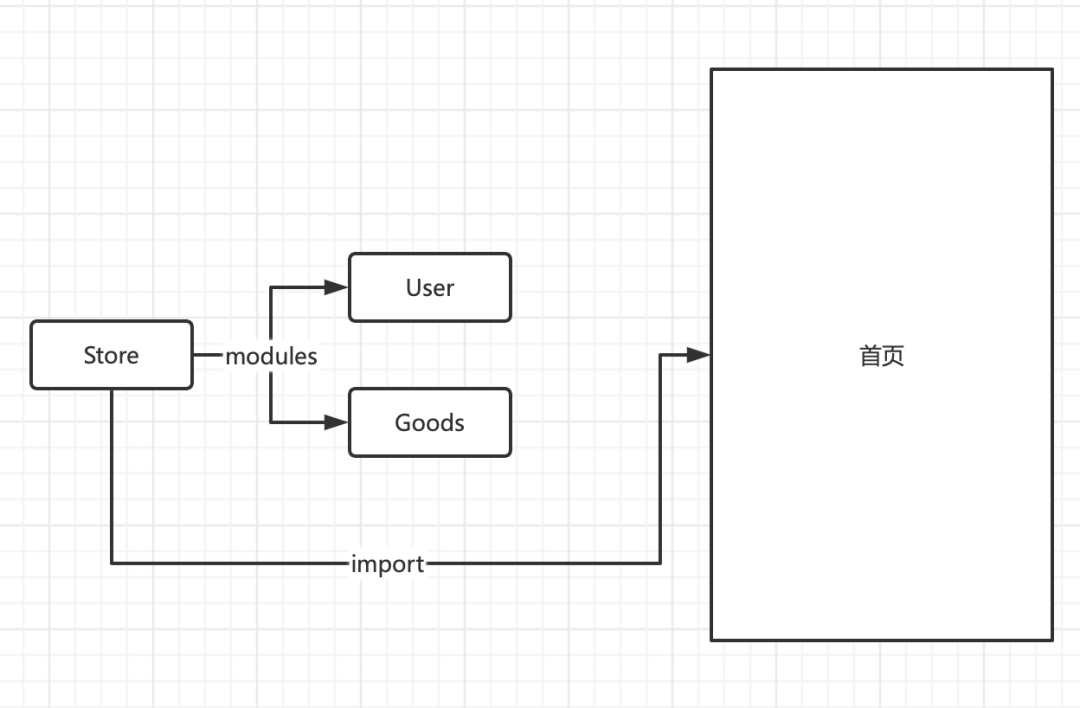Vue3 发布已经有一段时间了,它采用了新的响应式系统,而且构建了一套全新的 Composition API。Vue 的周边生态都在加紧适配这套新的系统,官方的状态管理库 Vuex 也在适配中,为此官方提出了一个 Vuex 5 的全新提案。
- 支持两种语法创建 Store:Options Api 和 Composition Api;
- 删除 mutations,只支持 state、getters、actions;
- 模块化的设计,能很好支持代码分割;
- 没有嵌套的模块,只有 Store 的概念;
- 完整的 TypeScript 支持;
在这个提案下方,有个评论很有意思。简单翻译一下:
好巧不巧,Vuex5 的提案,与 Pinia 实现的功能不能说毫无关系,只能说一模一样,今天的文章就来给大家介绍一下这个菠萝。
安装
在现有项目中,用过如下命令进行 Pinia 模块的安装。
- # yarn
- yarn add pinia@next
- # npm
- npm i pinia@next
安装完成后,需要在 Vue3 项目的入口文件中,进行导入安装。
- // main.js
- import { createApp } from 'vue'
- import { createPinia } from 'pinia'
- import App from './App.vue'
- // 实例化 Vue
- const app = createApp(App)
- // 安装 Pinia
- app.use(createPinia())
- // 挂载在真实 DOM
- app.mount('#app')
上手
要使用 Pinia 的话,只需要定义一个 store,然后在用到该数据的地方进行导入。
定义 Store
- import { defineStore } from "pinia"
- // 对外部暴露一个 use 方法,该方法会导出我们定义的 state
- const useCounterStore = defineStore({
- // 每个 store 的 id 必须唯一
- id: 'counter',
- // state 表示数据源
- state: () => ({
- count: 0
- }),
- // getters 类似于 computed,可对 state 的值进行二次计算
- getters: {
- double () {
- // getter 中的 this 指向👉 state
- return this.count * 2
- },
- // 如果使用箭头函数会导致 this 指向有问题
- // 可以在函数的第一个参数中拿到 state
- double: (state) => {
- return state.count * 2
- }
- },
- // actions 用来修改 state
- actions: {
- increment() {
- // action 中的 this 指向👉 state
- this.count++
- },
- }
- })
- export default useCounterStore
除了使用上述类似 vuex 的方式来构建 state,还可以使用 function 的形式来创建 store,有点类似于 Vue3 中的 setup()。
- import { ref, computed } from "vue"
- import { defineStore } from "pinia"
- // 对外部暴露一个 use 方法,该方法会导出我们定义的 state
- const useCounterStore = defineStore('counter', function () {
- const count = ref(0)
- const double = computed(() => count.value * 2)
- function increment() {
- count.value++
- }
- return {
- count, double, increment
- }
- })
- export default useCounterStore
使用 Store
前面也介绍过,Pinia 提供了两种方式来使用 store,Options Api 和 Composition Api 中都完美支持。
Options Api
在 Options Api 中,可直接使用官方提供的 mapActions 和 mapState 方法,导出 store 中的 state、getter、action,其用法与 Vuex 基本一致,很容易上手。
- import { mapActions, mapState } from 'pinia'
- import { useCounterStore } from '../model/counter'
- export default {
- name: 'HelloWorld',
- computed: {
- ...mapState(useCounterStore, ['count', 'double'])
- },
- methods: {
- ...mapActions(useCounterStore, ['increment'])
- }
- }
Composition Api
Composition Api 中,不管是 state 还是 getter 都需要通过 computed 方法来监听变化,这和 Options Api 中,需要放到 computed 对象中的道理一样。另外, Options Api 中拿到的 state 值是可以直接进行修改操作的,当然还是建议写一个 action 来操作 state 值,方便后期维护。
- // Composition Api
- import { computed } from 'vue'
- import { useCounterStore } from '../stores/counter'
- export default {
- name: 'HelloWorld',
- setup() {
- const counter = useCounterStore()
- return {
- // state 和 getter 都需要在使用 computed,这和 Options Api 一样
- count: computed(() => counter.count),
- double: computed(() => counter.double),
- increment: () => { counter.count++ }, // 可以直接修改 state 的值
- increment: counter.increment, // 可以引用 store 中定义的 action
- }
- }
- }
类型提示
在 Vuex 中,TypeScript 的类型提示做得不是很好,在进行类型推导时,只能找到它的 state。特别是写代码的过程中,代码提示就很不智能。
而 pinia,就能推导出定义的所有 state、getter、action,这样在写代码的时候,就会方便很多。
主要是 pinia 通过 TypeScript 进行了十分友好的类型定义,感兴趣的可以看看 pinia 的类型定义文件(pinia.d.ts):
代码分割
由于使用了模块化设计,所有的 store 都能够单独引入,而不是像 vuex 一样,通过 modules 的方式,将所有的 module 挂载到一个 store 上。
假设,我们当前通过 Vuex 创建了一个 Store,这个 Store 下有两个 module,分别是用户模块(User)和商品模块(Goods)。即使当前首页只使用到了用户信息,但是整个 Store 都会被打包到首页的 js chunk 中。
如果我们使用 pinia,我们会使用 defineStore 定义两个 完全是分离状态的 store,两个页面在引入时,也互不影响。最后打包的时候,首页的 js chunk 和商品页的 js chunk 会分别打包对应的 store。
Pinia 的介绍到这里就告一段落了,如果现在有新项目要使用 Vue3 进行开发,推荐无脑使用 Pinia,更加简洁,而且大小仅 1KB。











































